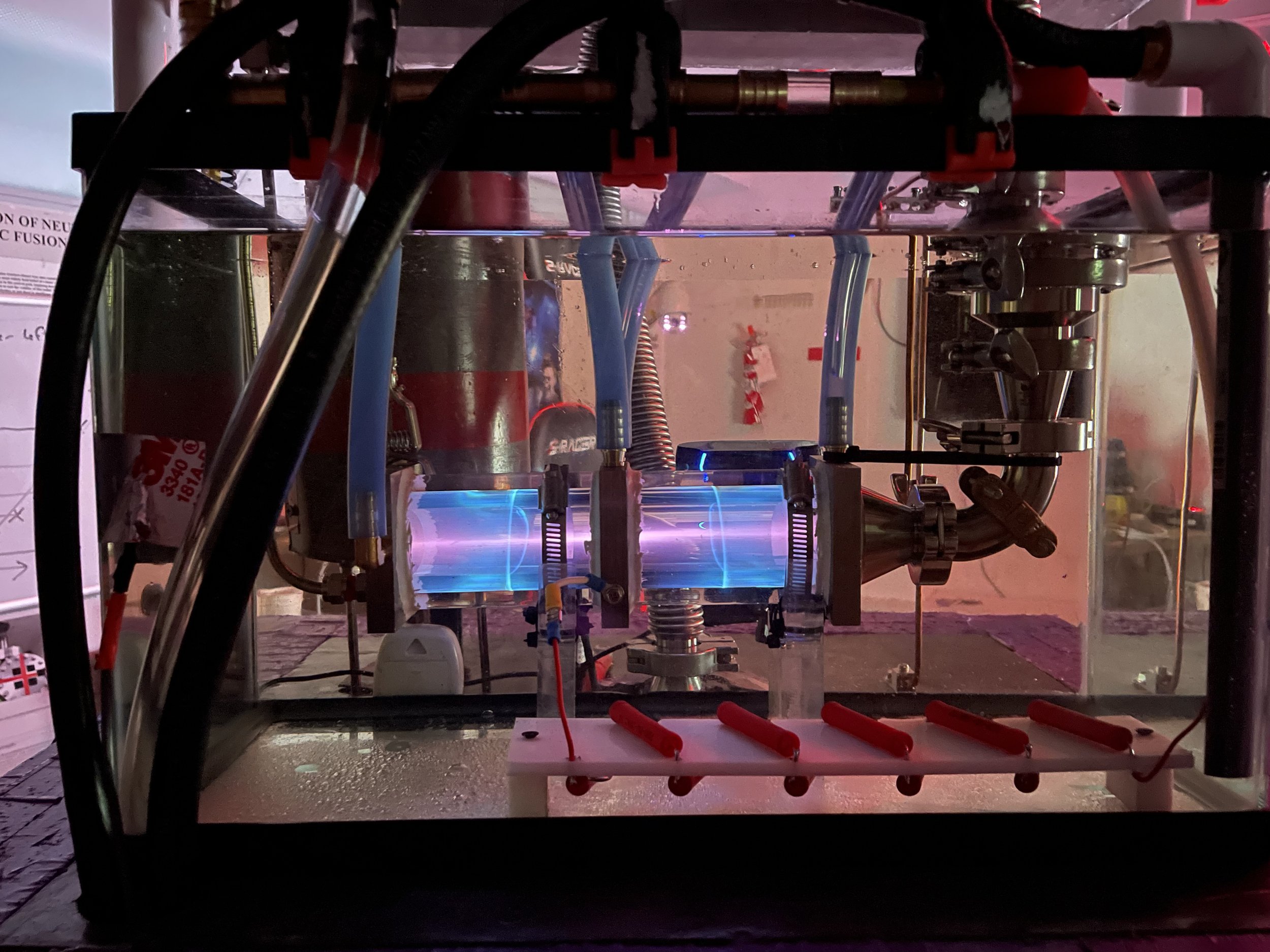Our Facility
RIC-9000 Nuclear Fusion reactor
While only ITER has laid verified claim to a nuclear fusion reactor that exceeds the "net gain" (energy producing) equation, Nuclear Fusion reactors are a reality and have been around for quite some time. One of the first to successfully build a fusion containment device, and demonstrate real nuclear fusion, was a man named Philo Farnsworth in the 1950's. The device consumed more energy than it produced and was subsequently abandoned. However, 60 years later, with instrumentation, automation, and telemetry far beyond anything Mr. Farnsworth could have imagined, we have reinvented Mr. Farnsworth's original fusion device making several advancements and discoveries surrounding the technology which were not possible 60 years ago. The reactor is not only a subject of continual refinement, but also acts as source of radiation for cancer research, material science, and neutron imaging.
Our reactor uses 136,000 Volts DC to ionize and accelerate a special form of hydrogen called deuterium. The deuterium is accelerated to velocities high enough to cause thermonuclear fusion during particle collisions. The fusion events release neutrons which we use in various research projects.
Scanning Electron Microscope
Northwest Nuclear Laboratories employs state-of-the-art telemetry and control systems that our scientists and engineers developed in-house. A team of electrical engineers and programmers enabled Northwest Nuclear to be one of the first research institutions in the world to leverage the power of Microsoft Azure to acquire scientific data about the reactor and leverage the use of IoT technologies for reactor control. We also have a SEM with which to do material science and explore irradiation experiments visually.
Bioengineering
One of the premiere research projects we have been working on during the last 4 years, has been Boron Neutron Capture Therapy (BNCT), a form of neutron oncology that targets individual cancer cells containing Boron atoms. Neutron absorption by Boron located in a cell creates a Lithium 6 reaction that kills only the cancer cell, leaving surrounding healthy cells untouched. This is an on-going research project.


